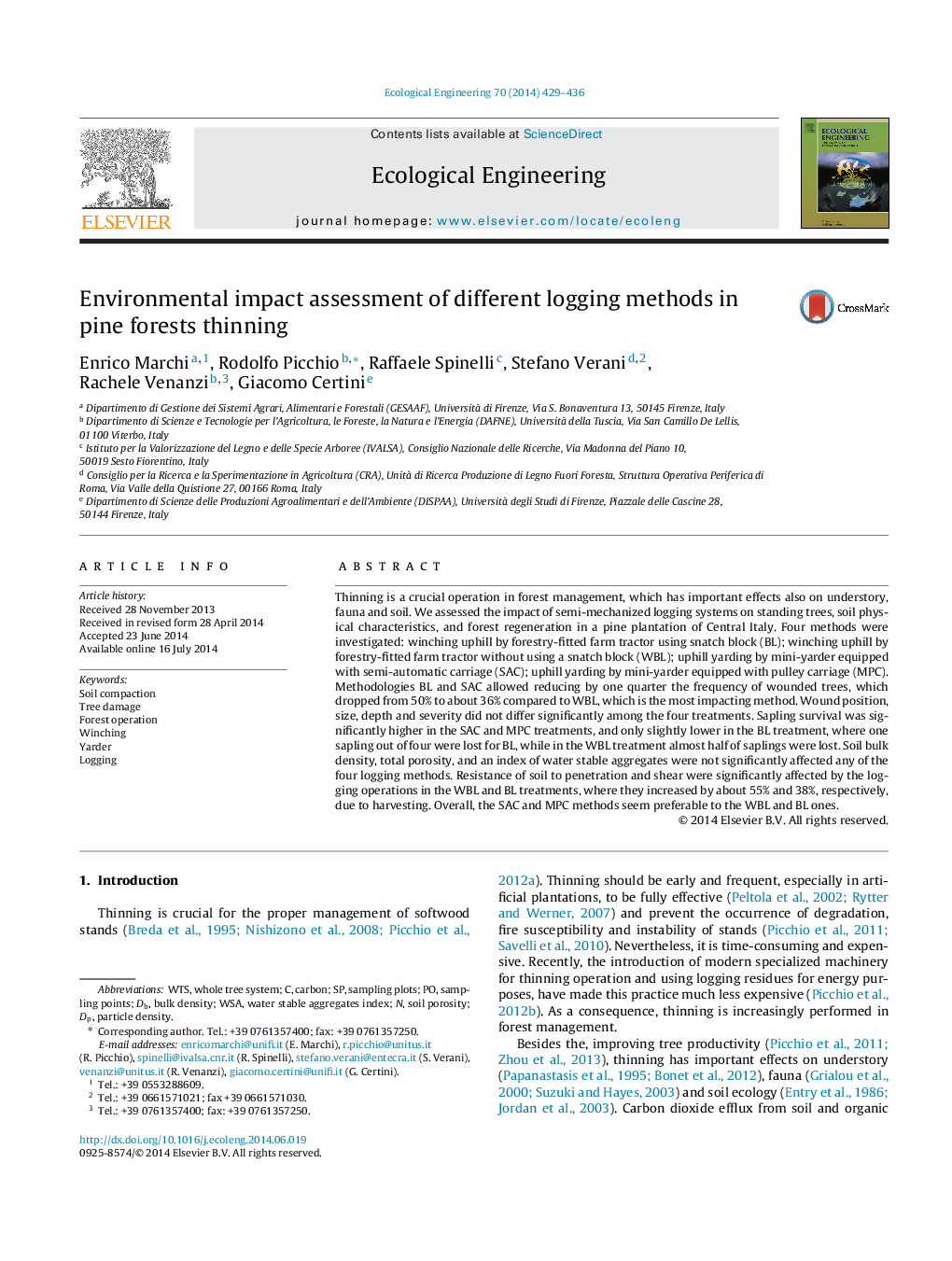| Article ID | Journal | Published Year | Pages | File Type |
|---|---|---|---|---|
| 6302217 | Ecological Engineering | 2014 | 8 Pages |
Abstract
Thinning is a crucial operation in forest management, which has important effects also on understory, fauna and soil. We assessed the impact of semi-mechanized logging systems on standing trees, soil physical characteristics, and forest regeneration in a pine plantation of Central Italy. Four methods were investigated: winching uphill by forestry-fitted farm tractor using snatch block (BL); winching uphill by forestry-fitted farm tractor without using a snatch block (WBL); uphill yarding by mini-yarder equipped with semi-automatic carriage (SAC); uphill yarding by mini-yarder equipped with pulley carriage (MPC). Methodologies BL and SAC allowed reducing by one quarter the frequency of wounded trees, which dropped from 50% to about 36% compared to WBL, which is the most impacting method. Wound position, size, depth and severity did not differ significantly among the four treatments. Sapling survival was significantly higher in the SAC and MPC treatments, and only slightly lower in the BL treatment, where one sapling out of four were lost for BL, while in the WBL treatment almost half of saplings were lost. Soil bulk density, total porosity, and an index of water stable aggregates were not significantly affected any of the four logging methods. Resistance of soil to penetration and shear were significantly affected by the logging operations in the WBL and BL treatments, where they increased by about 55% and 38%, respectively, due to harvesting. Overall, the SAC and MPC methods seem preferable to the WBL and BL ones.
Keywords
Related Topics
Life Sciences
Agricultural and Biological Sciences
Ecology, Evolution, Behavior and Systematics
Authors
Enrico Marchi, Rodolfo Picchio, Raffaele Spinelli, Stefano Verani, Rachele Venanzi, Giacomo Certini,
